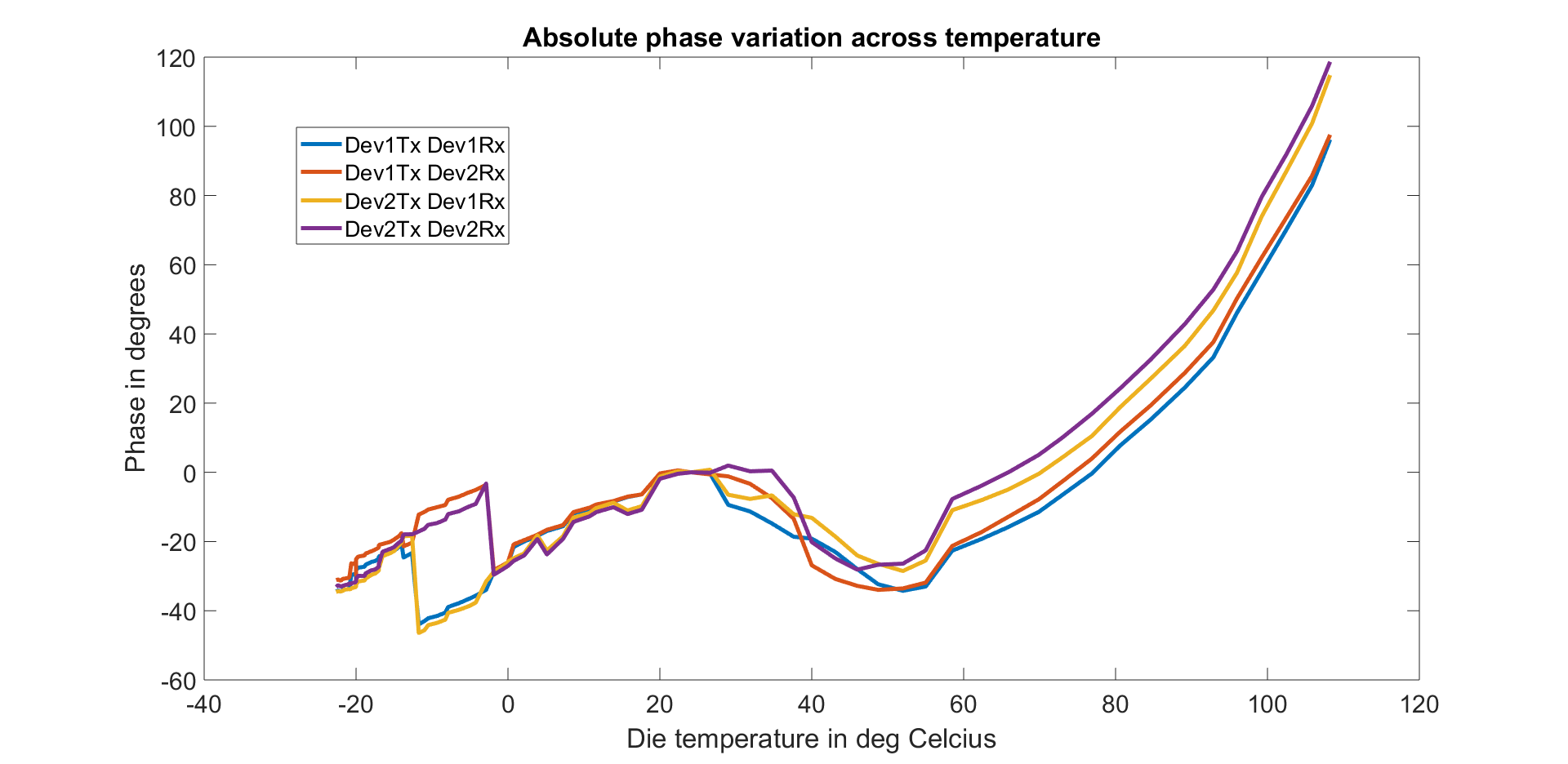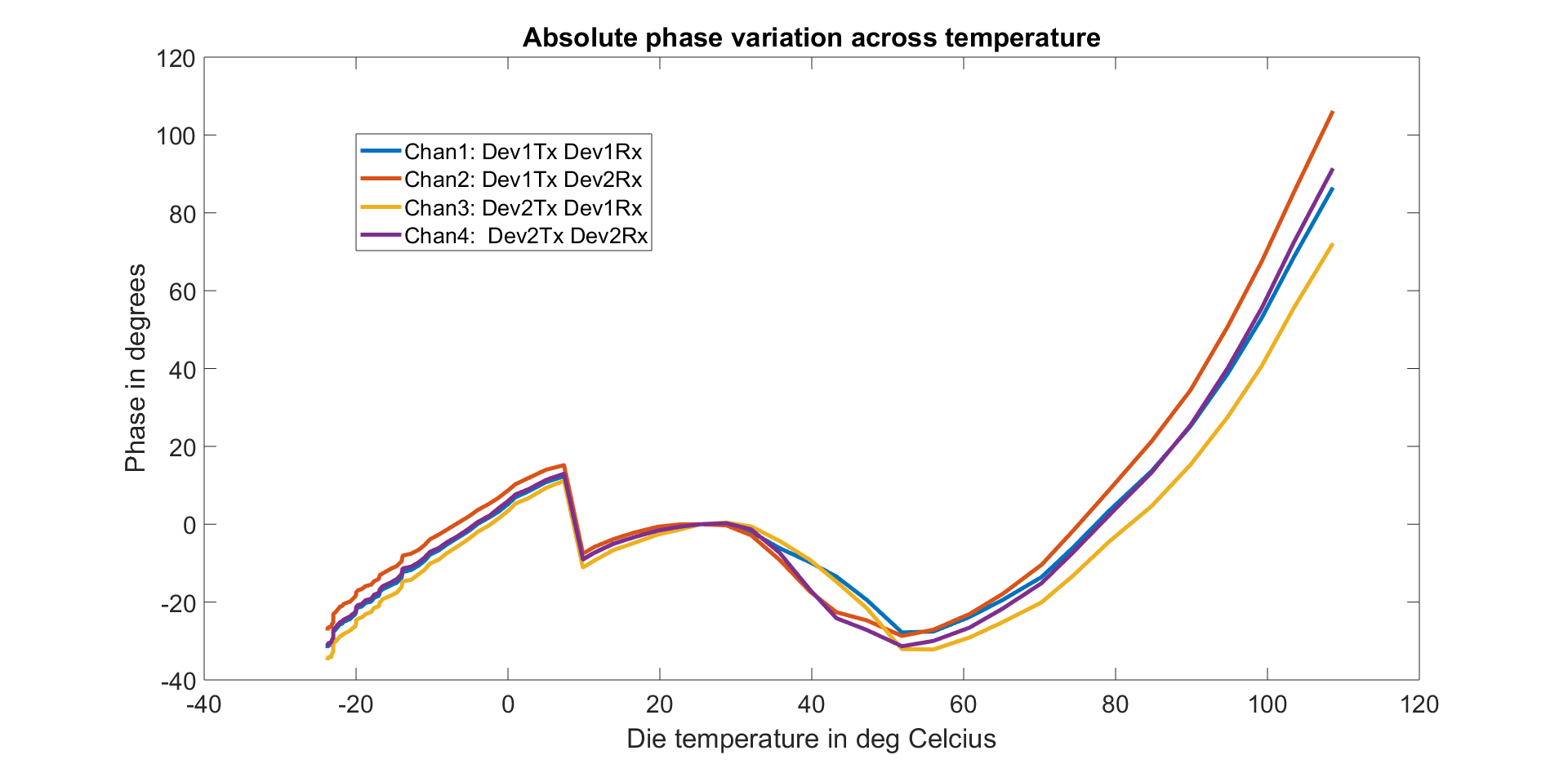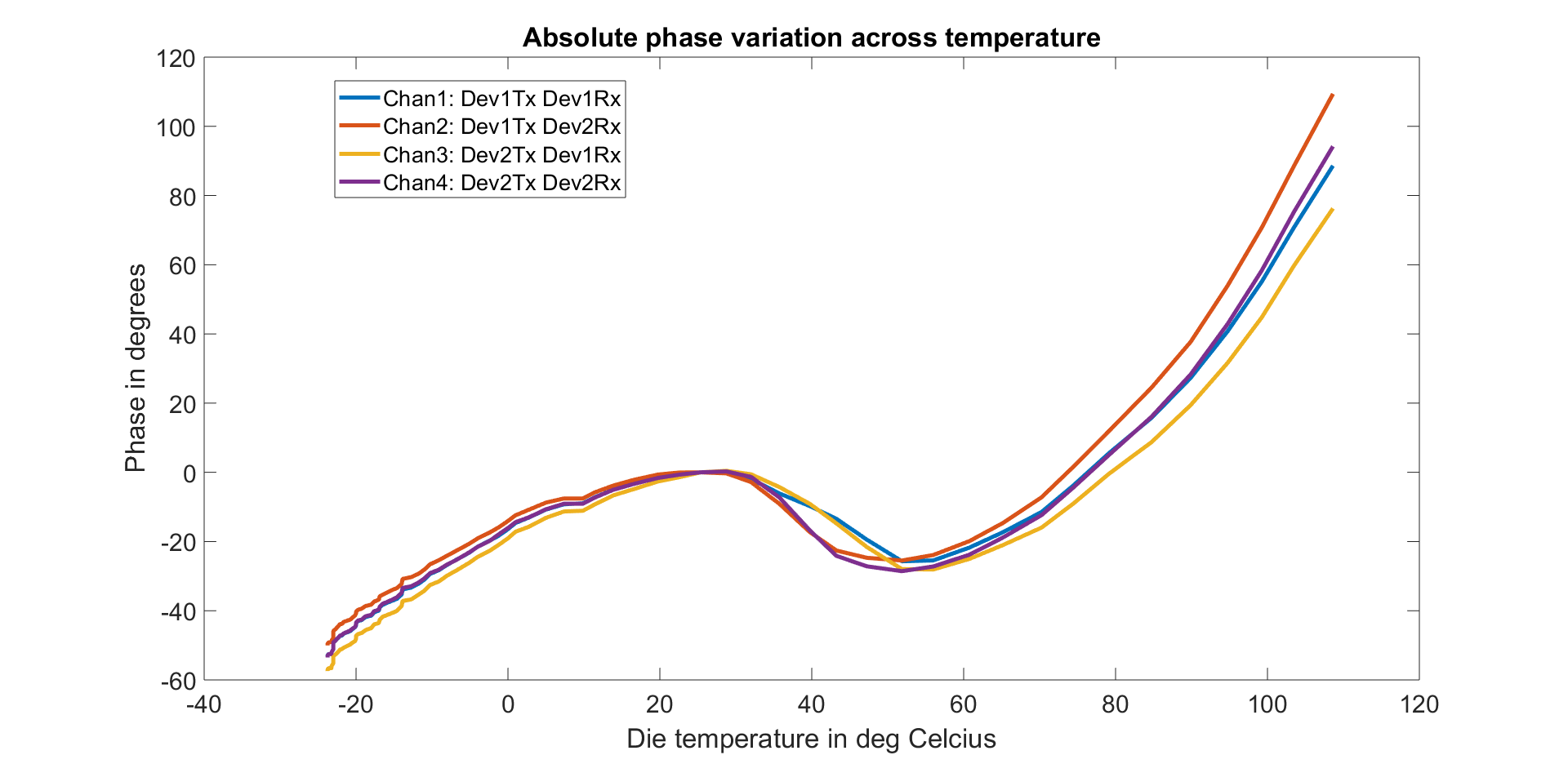SPRACV2 November 2020 AWR1843 , AWR2243
- Trademarks
- 1Introduction
- 2Cascade Incoherence Sources and Mitigation Strategies
-
3Enabling Cascade Coherence and Improved Phase
Performance
- 3.1 High-Level Summary
- 3.2 Saving RF INIT Calibration Results at Customer Factory
- 3.3 Corner Reflector-Based Offsets Measurement at Customer Factory
- 3.4 Restoring Customer Calibration Results In-Field
- 3.5
Host-Based Temperature Calibrations
In-Field
- 3.5.1 Disabling AWR Devices’ Autonomous Run Time Calibrations
- 3.5.2 Enabling Host-Based Temperature Calibrations of Inter-Channel Imbalances
- 3.5.3 Switching of DSP Imbalance Data
- 3.5.4
Enabling TX Phase Shifter’s Host-Based
Temperature Calibrations
- 3.5.4.1 Estimating TX Phase Shift Values at Any Temperature
- 3.5.4.2 Temperature Correction LUTs for AWR1843TX Phase Shifter
- 3.5.4.3 Temperature Correction LUTs for AWR2243 TX Phase Shifter
- 3.5.4.4 Restoring TX Phase Shift Values – Format Conversion
- 3.5.4.5 Restoring TX Phase Shift Values – Transition Timing and Constraints
- 3.5.4.6 Typical Post-Calibration TX Phase Shifter Accuracies
- 3.5.4.7 Correcting for Temperature Drift While Sweeping Across Phase Settings
- 3.5.4.8 Amplitude Stability Across Phase Shifter Settings
- 3.5.4.9 Impact of Customer PCB’s 20-GHz Sync Path Attenuation on TX Phase Shifters
- 3.5.5 Ambient and Device Temperatures
- 4Concept Illustrations
- 5Miscellaneous (Interference, Gain Variation, Sampling Jitter)
- 6Conclusion
- A Appendix
4 Concept Illustrations
The below graphs illustrate solution concepts explained in this note. These are based on experiments on AWR1243 cascade sensor with two devices, with one RX and one TX from each considered for analysis.
The results with AWR2243 are expected to be similar in the context of this note. With this, there are 4 virtual channels or TX-RX combinations. The temperature in the experiments is varied and the absolute phase of the radar return signal for various TX-RX combinations is plotted. One of the graphs is with the AWR devices configured with their independent and autonomous periodic Run Time (temperature) Calibrations running (as would be typically recommended in single chip usages). The devices potentially can self-trigger calibration updates in 10°C resolution and create phase jumps of unknown magnitudes at different temperatures, as illustrated in this graph. The next graph illustrates the same but with externally triggered temperature calibrations with 3 bias settings (Low Bias, Mid Bias, and High Bias, as explained earlier). The last graph illustrates the same with additional post-compensation of the phase jumps across Low-Mid-High based on prior measurements of the jumps at 25°C ambient, and is devoid of phase jumps.
 Figure 4-1 Absolute Phase Variation with Independent, Autonomous Periodic Run Time
Calibrations in the Devices
Figure 4-1 Absolute Phase Variation with Independent, Autonomous Periodic Run Time
Calibrations in the Devices Figure 4-2 Absolute Phase Variation with
External Triggering of Calibration Updates1
Figure 4-2 Absolute Phase Variation with
External Triggering of Calibration Updates1- Based on Low Bias, Mid Bias, and High Bias temperature ranges.
 Figure 4-3 Absolute Phase Variation with
External Triggering of Calibration Updates1
Figure 4-3 Absolute Phase Variation with
External Triggering of Calibration Updates1- Based on Low Bias, Mid Bias, and High Bias temperature ranges with associated post-compensation using prior 25°C estimation of the jumps.